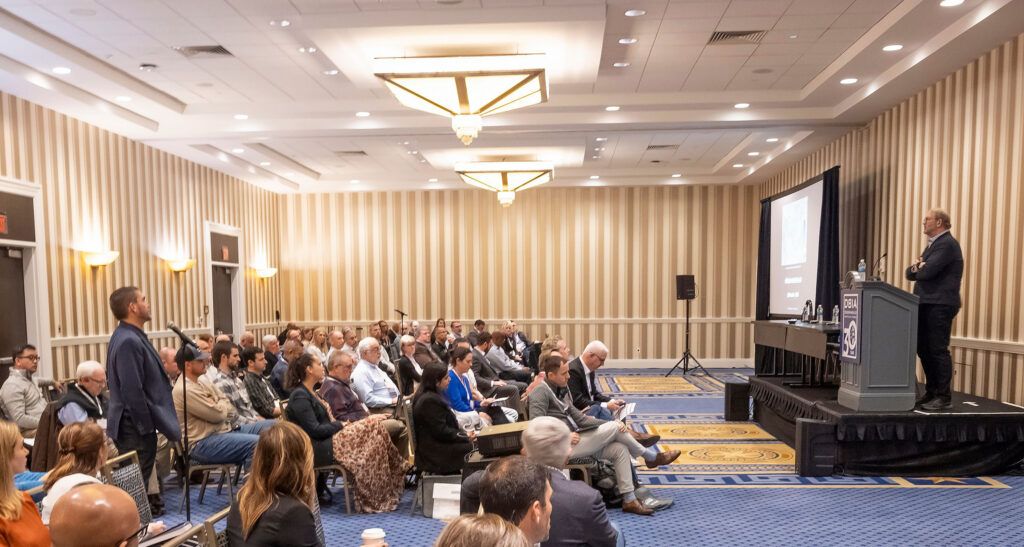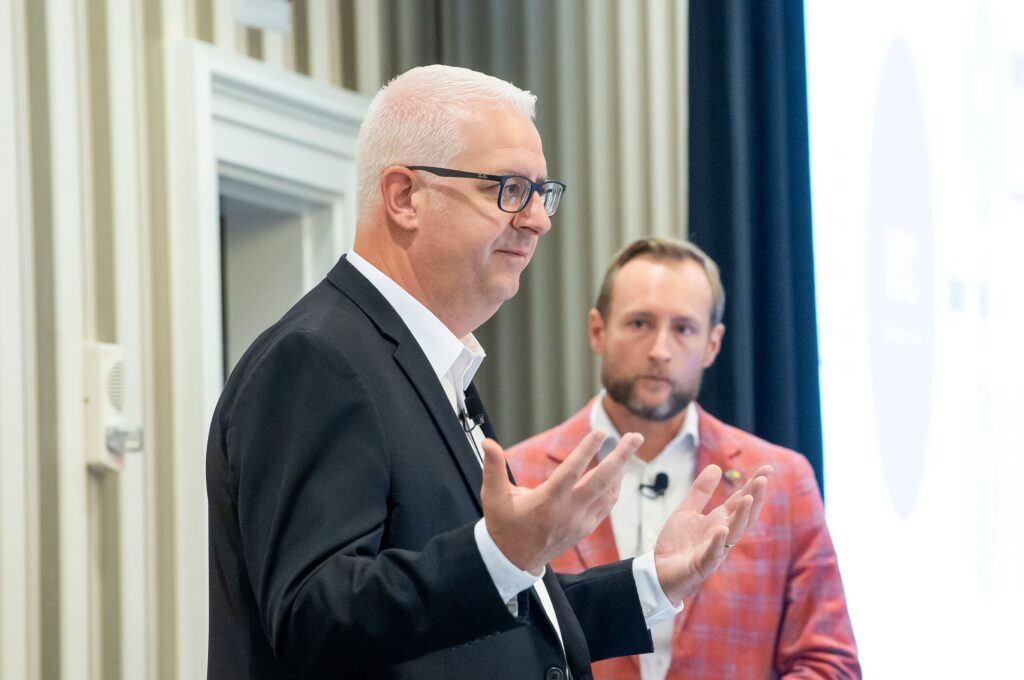By: Brian Skripac, DBIA Director of Virtual Design and Construction
Building on the success of the Virtual Design and Construction (VDC) track at the 2022 DBIA Design-Build Conference and Expo, the 2023 conference featured a half-day pre-conference event dedicated to VDC. The inaugural VDC Leadership Exchange (VDCLEx) drew more than 100 attendees, including VDC leaders and industry professionals looking to learn more about how integrating emerging design construction technologies with design-build can drive value across the project lifecycle.
Opening Keynote Tackles AI in Design-Build

The VDCLEx keynote session, led by Yale Architecture Associate Dean and Professor Adjunct Phil Bernstein, FAIA, NOMA, LEED AP, explored how Artificial Intelligence (AI) can drive best practice in design-build by evolving beyond the use of BIM where we continue to just make working drawings. We now have an opportunity for design-build teams to realize a technological nirvana in which massive amounts of data can be connected through a successful evolution of AI. Reaching this more efficient process requires us to move past the simple inputs and outcomes of current automated and autonomous processes to merge the generative capabilities (ideas) with the evaluative capabilities (inference), creating an industry-wide opportunity for the integration of technology with project delivery.
Following the keynote, attendees chose between the VDC Deep Dive or VDC for Non-VDC Professionals sessions.
Deep Dive Sessions Explore Digital Transformation, Augmented Construction Sites
The VDC Deep Dive sessions focused on technology’s evolution from traditional BIM-centric and authoring platforms to innovative new opportunities for design-build teams. For instance, robots, 3D printing, and automation are beginning to transform the look and experience of construction sites by changing how teams capture and share information while increasing efficiency and safety and reducing rework. Panelists in the session also noted that bringing this level of automation and robotics to the job site requires defining scope language appropriately and deciding what model-based information is needed. For instance, teams should consider the required level of development for specific model assemblies and the necessary embedded data for the programming of the project’s construction site partners.

Expanding the conversation on data, the panelists stated that quality is preferred over quantity of data being produced so it can be used as a connective value-based element across design-build teams. If we’re not focused on what will provide value, then we’ll create waste. Looking to mitigate waste, automation can perform repetitive tasks and reviews for adherence to codes and other industry standards, which can increase speed and accuracy. The same can be true for how technology can capture and disseminate project-specific lessons learned as best practices at a corporate level, which should be embedded into our process. Codifying and incorporating the lessons learned into best practices helps avoid repeating mistakes on future projects, creating another level of waste across our organization.
VDC Creates Reliance, Trust and Accountability Among Project Team Members
At the same time, another conversation reflecting on the need for a strategic and entire lifecycle approach to VDC was developing in the VDC for Non-VDC Professionals track. Here, panelists explored VDC’s potential to build on the valuable opportunity created for design-build teams by having the right people on the team at the right time. This early engagement allows the entire team to leverage their expertise and project contributions, maximizing success.
This approach –– coupled with VDC –– enables teams to become more proactive during design and construction, affording the opportunity to better understand and define the evolution of deliverables. Here, teams can explore the interdependencies of all the different systems and authors involved in the modeling effort while taking advantage of the common language of level of development and model element authors to better plan the execution of our work. This will also minimize redundancy and errors, enabling a level of reliance on our model elements so they can be a more holistically integrated component of the project’s deliverables throughout the design-build-operate continuum.

VDCLEx Looks to the Future
The closing VDCLEx Forum allowed attendees to share feedback that helped drive the conversation on the value of the day. Some recurring successes included the quality and diversity of panelist perspectives, the inclusion of both technologists and practitioners in the same room to share knowledge, and an overwhelming desire to expand the VDC conversation.
Attendees expressed interest in more case studies and more Owner engagement. There was also a desire to have resource document artifacts that cite terminology, process, roles/responsibilities and collaborative BIM/VDC contract language. Attendees were also excited to continue sharing knowledge not only at the national level but also at regional and local chapter events.
Many thanks to the sponsors of DBIA’s first VDC Leadership Exchange:
